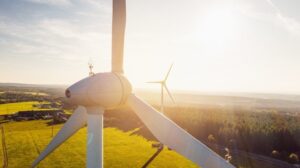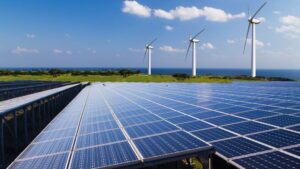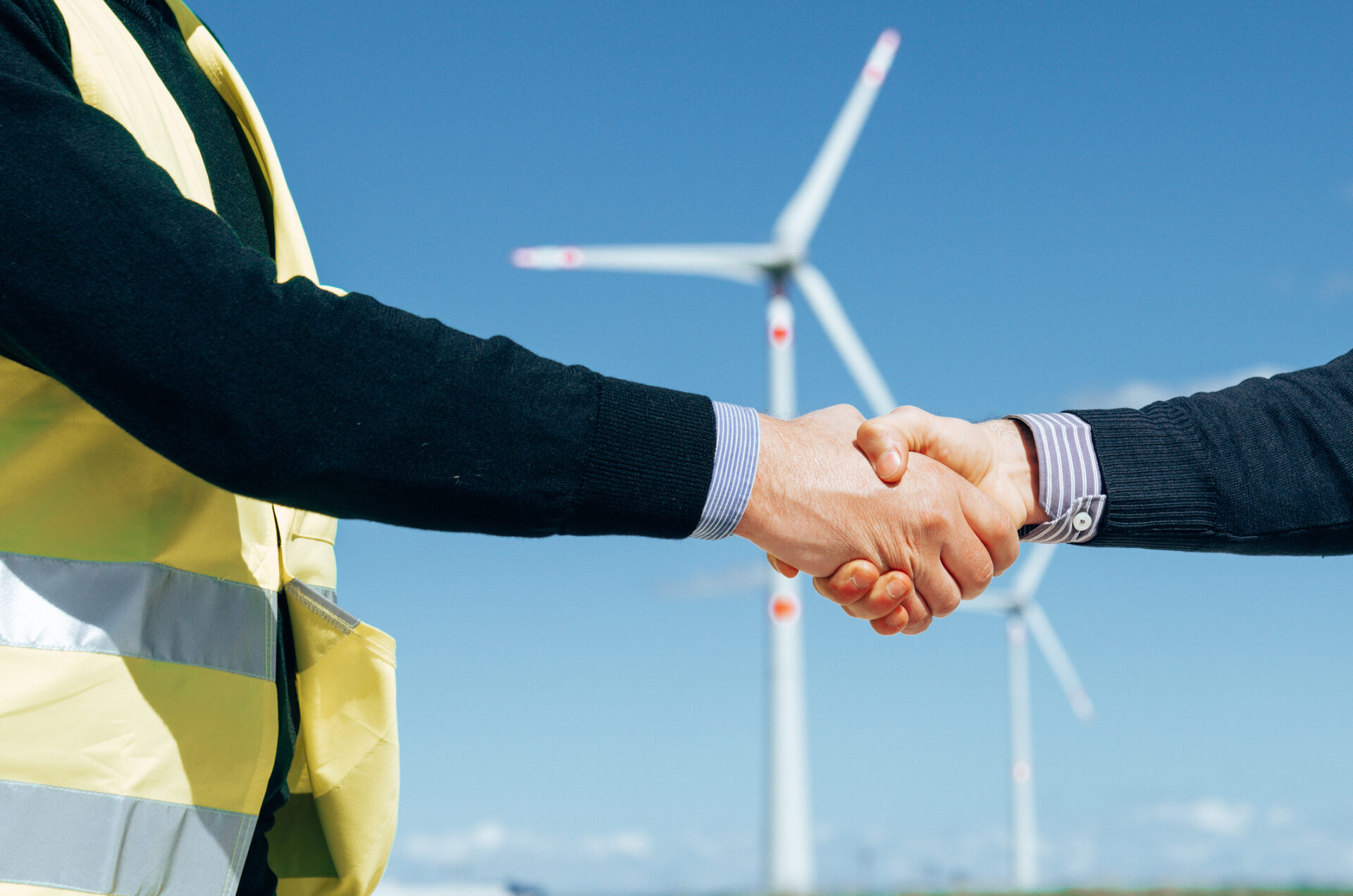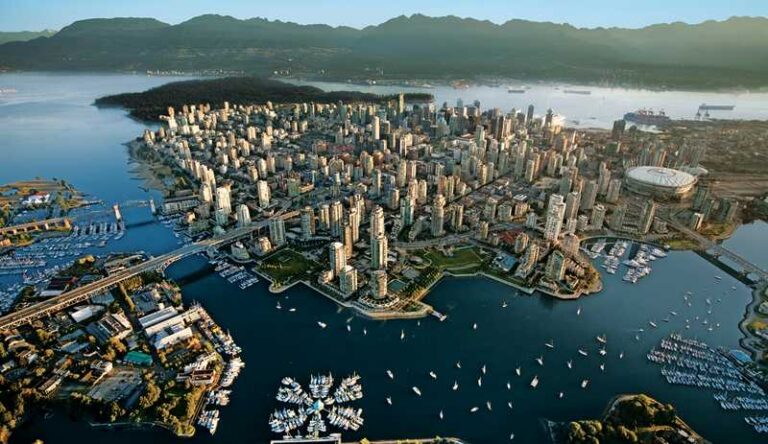Tuesday, August 19, 2025
The federal government unveiled its final and long awaited Clean Electricity Regulations (CER) on December 17 2024. Back in 2021 during COP26 in Glasgow, Prime Minister Justin Trudeau promised Canada would have a net-zero emissions electricity grid by 2035. The government has framed these regulations as a key part of their plan to get us there. But in the finalized CER, the target of a net-zero electricity grid is actually set to 2050. How will this change impact the industry? And what has been the CER’s reception from activists and industry stakeholders?
“We are disappointed that the federal government significantly watered down the Clean Electricity Regulations. The weakening of these regulations equates to an abandonment of the Prime Minister’s promise to Canadians of a net-zero electricity grid by 2035,” states Keith Brooks, the programs director for Environmental Defence, a Canadian environmental advocacy organization that works with government, industry and individuals to defend clean water, a safe climate and healthy communities.
On the other hand, Electricity Canada – which represents and advocates for the principal companies in the electricity industry – declares that the CER “must be achievable in all provinces” and that “the final Clean Electricity Regulations […] do not meet this test. The CERs will set strict limits on how and where electricity can be generated, limiting certain types of generation and will determine how trillions of dollars’ worth of investment will be spent.”
On both sides, there seems to be disappointment with the final regulations. But how did we get here?

Powerful strategies
Back in June 2023, a first draft of the CER was released, demonstrating the federal government’s commitment to the target of a clean electricity grid by 2035. And by the end of that same year, Prime Minister Trudeau and all of the G7 Leaders affirmed their willingness to achieve this target. This first draft received some backlash from some provinces such as Alberta and Ontario. It was also deemed unachievable by the Independent Electricity System Operator (IESO) that manages Ontario’s power system. For the IESO, the target would jeopardize “the reliability of the electricity system, the electrification of the broader economy and the economic growth of the province”, namely because Ontario relies on gas plants for some of its electricity. And the provincial government is planning on expanding gas-fired power plants to help meet an expected surge in demand for electricity.
Then in February 2024, the federal government stated that a few changes were being considered for the final regulations to make them more achievable for provinces like Ontario. “We are afraid that if the regulations get weakened, we’re not going to get to the Prime Minister’s promise of a net-zero grid by 2035,” explained Alienor Rougeot, a senior program manager of climate and energy at Environmental Defence, about the second draft.
The big switch
Now that the final regulations have been revealed, let’s explore what they actually mean. And this starts with understanding how the electricity grid works in Canada. According to the Canadian Energy Regulator, Canada’s electrical grid is not nationally managed. Each province and territory is responsible for operating and maintaining their local grids through a network of power generators and utilities. Due to the interconnected north-south nature of the infrastructure, some Canadian grids can bleed into the United States.
Most provinces and territories have government-owned utilities that generate and distribute electricity. But for some of these provinces, their grids are also supported by smaller privately-owned utilities or independent power producers to provide additional generation and/or distribution services. Others, such as Alberta and Ontario, have competitive markets for electricity generation and distribution, with broad participation by privately-owned utilities. The sources for power generation are varied and depend on the provinces’ jurisdiction. Canada’s grid is already substantially green, with 82 per cent of the power supply coming from non-emitting sources. But four provinces — Alberta, Saskatchewan, Nova Scotia and New Brunswick — still rely on coal and natural gas to supply between 30 and 85 per cent of their power.
According to the Canadian Climate Institute, the electricity demand in Canada is expected to grow by 60-110 per cent by 2050 compared to current levels. It is clear then that – since Canada is shifting away from fossil fuels to electric power – the grid must be clean to ensure that this electrification actually reduces overall emissions rather than shifting the current emissions to the power sector.
So how is the federal government planning to achieve the net-zero target by 2050? One of the main features of the regulation is the emissions performance standard it places on power producers. In Ontario and Alberta, this means that some of the key regulations in the CER are about gas-powered plants.
The draft regulations of June 2023 put the emissions limit per unit of energy produced at 30t of carbon per gigawatt-hour starting in 2035 and then 0t/GWh in 2050. The limit has now been raised to 65t per GWh with an additional 35t per GWh allowed through emissions offset credits. “We think the reason for this raise is because of the immense pressure put on the federal government by the industry but also by a very misleading campaign that came from the province of Alberta and one from Electricity Canada more recently,” suggests Rougeot.

Moreover, the first draft included an exemption for some existing gas plants. Gas plants operating by January 1st 2025 wouldn’t be required to comply with the regulations until the end of their prescribed life, which the draft regulations set at 20 years after the plant starts producing electricity. In its finalized regulations, the government has extended this prescribed life to 25 years.
New plants that have “significant work underway” or will be constructed after January 1st 2025 will be subject to the regulations beginning in 2035 or on the date they are commissioned, if they are commissioned after 2035. “Although it is understandable for some more recent plants to be exempted in order for the plants’ owners not to have stranded assets, it is worrisome to see the exemption extended in comparison to the first draft. This change could technically exempt numerous gas plants across the country from the regulations until as late as 2050 which is past the target,” emphasizes Rougeot.
Overall, the regulations aim to cut 181Mt (megatonnes) of cumulative carbon emissions from the grid between 2024 and 2050 – a reduction from the draft which targeted a cut of 342Mt by mid-century.
Addressing ongoing challenges
But what is the issue with gas plants? This energy is often framed as a transition energy. For instance, the Canadian Gas Association (CGA) states that gas is an “important partner for intermittent renewable electricity”.
In 2023, Canada was the fifth largest natural gas producer in the world with a production averaged of 17.9 Bcf/d (billion cubic feet per day): a 3.6 per cent increase from 2022. Most of the natural gas comes from Alberta and B.C. which accounted for 98 per cent of Canada’s total production in 2023. Of course not all the natural gas is used in Canada. Some of it is exported – mainly to the USA via pipelines – making it an extremely profitable industry with a net export value of $10.1 billion in 2023, according to the Canada Energy Regulatory.
But for Rougeot, it is increasingly false that gas is necessary in this transition. “I think the gas industry is trying to continue justifying extracting more gas. But if we are having an honest conversation about what helps with an intermittent energy supply, the reality is that having a source of power like hydro and other renewable energies is more reliable. These sources of energy are a lot more performant than they were a few years ago”, she adds.

On the other side of the conversation, the CGA argues that “policy-driven electrification could increase the total energy cost by between $580 billion to $1.4 trillion over the 30 year period between 2020 and 2050”. On this matter Rougeot disagrees once more. For her, renewable energies and battery storage technologies are affordable and cheaper than natural gas. “There is also plenty of evidence that shows that if we electrify our economy, it would be a net saving for households because with wind and solar, there aren’t fluctuations in prices as it is the case for gas. Once renewable energies are built, they are free to use; the savings for the government are huge compared to gas.”
In terms of costs, it is important to note that natural gas comes with a set of indirect costs because of its impact on the environment and people’s health. Not only burning gas creates carbon dioxide (CO2), but also – during its transportation – significant methane leaks occur. Methane is another greenhouse gas that can accelerate climate change and according to the MIT it traps around 120 times as much heat as CO2 does moment to moment. “We have to keep in mind that the costs are not just in terms of use of the energy but also the consequences of that use. The cost of gas is paid elsewhere if not directly in its price then in health care for people who get asthma because of air pollution or in repair after natural catastrophes due to climate change. These consequences feel less direct but they are linked to our gas usage,” explains Rougeot.
However, both Environmental Defence and the Canadian Gas Association agree on the fact that the federal regulations are not enough to make a real change. For the CGA, “this is more than just an environmental policy problem and requires skills and knowledge well beyond environment departments. Insofar as most strategic and operational questions are concerned, it requires skills and knowledge from energy, economic and finance departments. […]In the long term, utility regulatory modernization that attends to affordability and system integrity, will help ensure the durability of reforms and the effectiveness of emissions reductions efforts.”
As Canada is about to increase its electricity needs, the country will need more energy to supply the demand. If 82 per cent of the electricity grid comes from non-greenhouse gas emitting sources – 70 per cent of which is renewable energy – it will not necessarily remain that way. The percentage depends on what energy sources are used. For Alienor, Canada has a lot of potential in terms of renewable energy but she worries that Canada is “going the wrong way” by suppling the demand with gas-powered energy instead of renewable energies. “Ontario’s grid was 92% zero emissions and now it’s only 87%”.
Since the release of the final CER, Alberta, Canada’s main oil and gas-producing province, remains opposed to the CER, arguing that it interferes with provincial jurisdiction. The provincial government plans to challenge the regulations in court, proposing an alternative solution that avoids federal regulation of its power grid. On the other side of the discussion, Environmental Defence sees these regulations as a missed opportunity to “increase in investments in renewable projects that bring local jobs and revenue, on top of supplying Canadians with clean, affordable and reliable power.”
A few weeks after the release of the CER, on January 6, Trudeau announced his resignation as Liberal leader and prime minister. Although he will only step aside once a replacement is chosen for both roles, the Parliament is suspended until March 24. However, this situation does not change anything for the CER since the government’s regulatory authority continues unabated. In other words, the public service continues to implement regulations from legislation previously passed by Parliament.

Andreia Portinha Saraiva is a freelance journalist from Switzerland currently spending time in Canada.
Featured images credits: Getty Images











